Customer Segments
Table of Contents
The Business Model Canvas Customer Segments
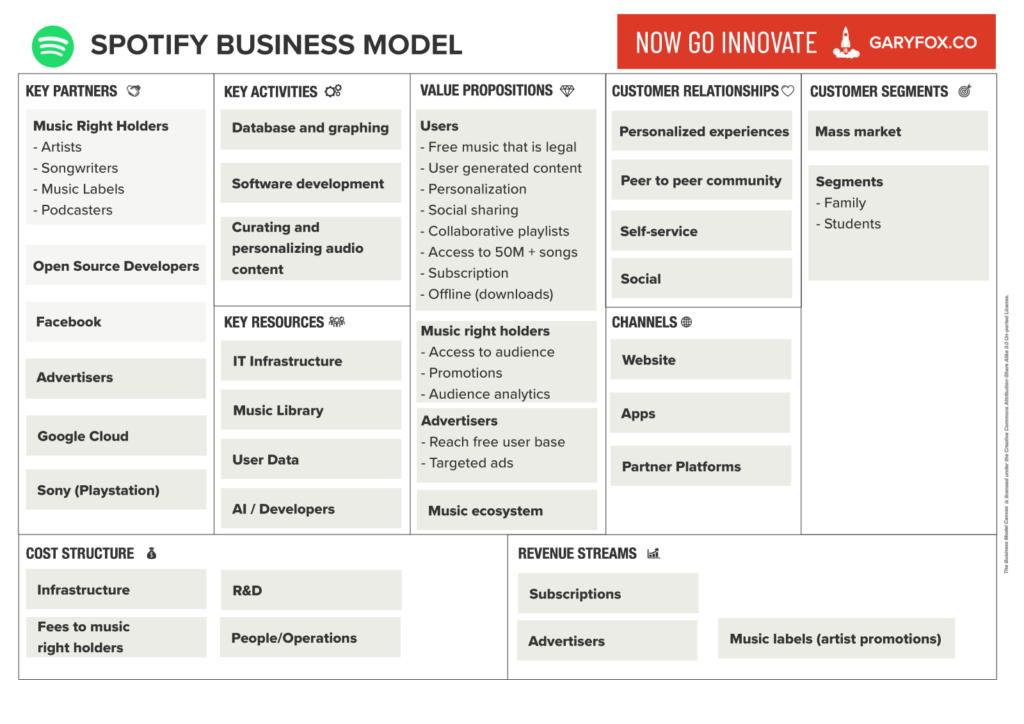
The Spotify Business Model Canvas shows how the broader elements of the business come together. Often, I will use both methods to help review the logic and exchanges within a business model.
In the rest of this article, I will walk you through the main sections of the business model canvas.
Business Model Canvas Customer Segments
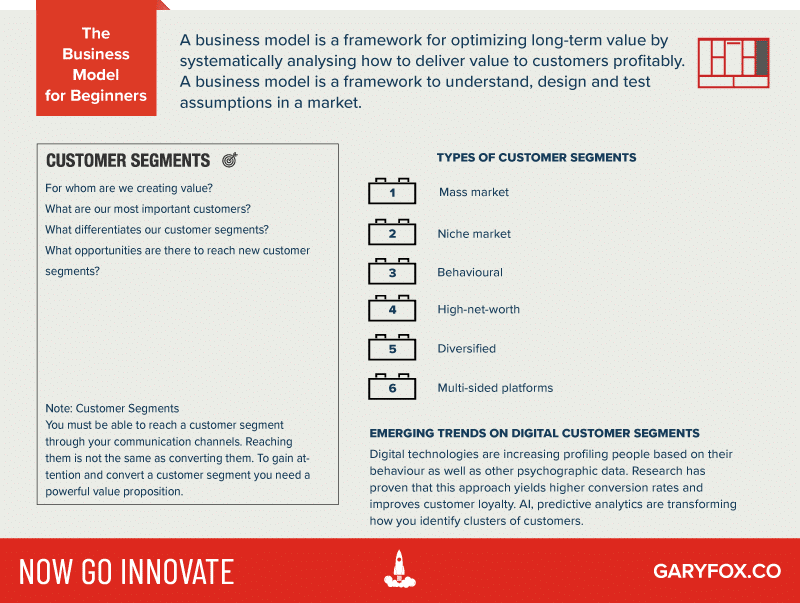
What is a customer segment?
This may sound obvious, but your business isn’t a business without customers. Defining your customers is the first and most important part of any business model.
Customer segments are created by segmenting a market into distinct groups of customers that have common characteristics. This can be based on their needs, behaviours, interests, lifestyle choices and other characteristics they share.
Many businesses start off using a simple demographic segmentation such as age, ethnicity, profession, gender, etc and then add-in other data to create a more realistic view. Other data may include factors such as usage, interests and motivations.
As a result of segmenting customers a business can decide which customers to target, either a single group or many cases multiple groups.
Each customer segment will have different needs. Later on, you will match different value propositions to each of your customer segments. The more you connect and meet the needs of each customer segment, the more sales you will make.
A further fundamental consideration is to consider which customer segments are likely to deliver the biggest profits. The ultimate end result of deciding which business model to choose needs to be based at least in part of how you can maximise profits for your business.
Broadly there are six main market segmentation approaches to market segmentation.
Mass Market
Products and services which target the Mass Market segment have a broad appeal and often cover the overall population e.g. soap. The mass-market approach doesn’t rely on any specific segmentation and instead aims to be efficient by treating everyone the same.
In reality, there are very few companies that do this. Most companies apply some level of segmentation. The value propositions, distribution channels and customer relationships are aimed at a general pool of people who have a common problem. As an example, Spotify with its music streaming platform appeals to a mass market of music fans.
Niche Market
A Niche market refers to a customer segment with highly defined characteristics. This segment requires a highly tailored product, custom made to suit their needs. Therefore the value propositions, channels ad customer relationships are tightly defined by the preferences of this particular customer segment.
Niche marketing provides a detailed analysis of this type of customer and how to tailor marketing strategies towards a niche customer segment. Although soap is a mass-market product, a company might focus in on a niche group within the market who are being under-served by the mass-market producers. As a result, a business might decide to provide soaps for people with hyper allergenic skin.
Behavioural
Some businesses choose to provide products and services to customer segments based on how people buy. A company might choose to create different value propositions, channels and customer relationships according to these differences in the customer segments.
As an example, you can segment on behaviours such as:
- How customers use a product or service
- How often they use it
- How much time they spend with it
- What features they use
Diversified
A business that decides to take a diversified approach to customer segmentation will select a wide range of customer groups with very different needs. Often, companies diversify as they migrate to new customers and markets.
Examples include:
- Amazon diversifying into cloud services based on its utilizing its core infrastructure.
- Apple migrating into Apple TV based on its previous development of Apple music.
High-Net Worth
These groups represent less than 1% of the world’s population and are defined as a person or family with liquid assets above a certain figure. High-net-worth individuals (HNWIs) and ultra-high-net-worth individuals (UHNWIs) represent a highly attractive and lucrative audience.
A recent report by professional services firm PwC found that 98% of HNWIs access the internet daily, with affluent consumers spending up to three hours of their personal time online every day. So, employing the right strategies when marketing to high-net-worth individuals can reap dividends.
Multi-sided Platforms/Markets
Often customer segments are dependent on suppliers. A platform or marketplace facilitates connections and makes it easier to transact.
eBay is an example of a multi-sided platform that connects buyers and sellers. If eBay doesn’t have a sufficient customer base for its sellers, sellers will not be interested in advertising their wares on eBay. Conversely, if the buyers do not have a multitude of sellers to choose from, they may switch to other mediums to fulfil their needs.
Customer segmentation is a major first step in defining who you are customers and what defines them as a group. The more data and details you can use to define your customers the more you will understand them. That, in turn, will help you understand how your product or service fits into why they will buy.
If you already have customer data then a good starting point is to define your customer segments using a marketing persona. The persona canvas helps you quickly hone in on the right mix of data to create a persona to understand the goals, motivations and potential barriers you might face.
If you are just starting out use the Jobs To Be Done framework to help you identify your customer’s needs and develop your value proposition.
How To Create A Business Model Canvas Customer Segment
| Variable | Dimensions | Sample survey question |
| Age | Unidimensional | How old are you? |
| Gender | Unidimensional | Are you female or male? |
| Country of origin | Unidimensional | Where do you live? |
| Prior purchase | Unidimensional | Have you booked a cruise trip before? |
| Benefits sought | Multidimensional | When booking flights online, do you care about • convenience • value for money • speed • ability to compare fares |
| Motives | Multidimensional | When choosing a vacation, do you want to: • rest and relax • explore new things • meet new people • learn about other cultures • get away from everyday routine |
The table above shows you some simple and then more progressive ways of segmenting a customer.
How you decide to segment your customers will depend on:
- to what degree you need to segment based on the business model/idea.
- the availability of existing data.
- budget and time to conduct research.
- level of data that can be usefully implemented in your CRM system and approaches – in other words, if you can’t use the data it’s not worth collecting at this stage of the business.
1. Decide to segment
Is there an obvious way to segment the market? If you were Uber I suspect that they probably segmented customers based on Cities – simply because they have the highest level of taxis.
2. Aim For The Ideal Target Segment
What would your ideal target segment look like?
Simple rules to follow, the customer segment:
- must be homogeneous; members of the segment must be similar to one another.
- must be distinct; members of the segment must be distinctly different from members of other segments. 34
- must be large enough; the segment must contain enough consumers to make it worthwhile to spend extra money on customising the marketing mix for them.
- must be matching the strengths of the organisation; the organisation must have the capability to satisfy segment members’ needs.
- members of the segment must be identifiable; it must be possible to spot them in the marketplace.
- must be reachable; there has to be a way to get in touch with members of the segment in order to make the customised marketing mix accessible to them.
3. Collect Data
Collect data – usually these all into two categories:
- a segmentation criterion is one single characteristic that represents either a 1 or 0 – e.g 1 for female, 0 for male in the database.
- descriptors represent a description of some sort e.g. benefits sought.
4. Explore Data
Explore data, pre-process if required.
5. Extract Segments
Split consumers into segments using the segmentation variable.
6. Profile Segments
Determine the key features of the extracted market segments.
7. Describe Segments
Describe segments in detail.
8. Select The Target Segment
Evaluate segments and select the target segment(s).
9. Customize Marketing
Develop a customised marketing mix.
10. Evaluate and Monitor
Evaluate success, monitor changes.
Identifying Value Opportunities
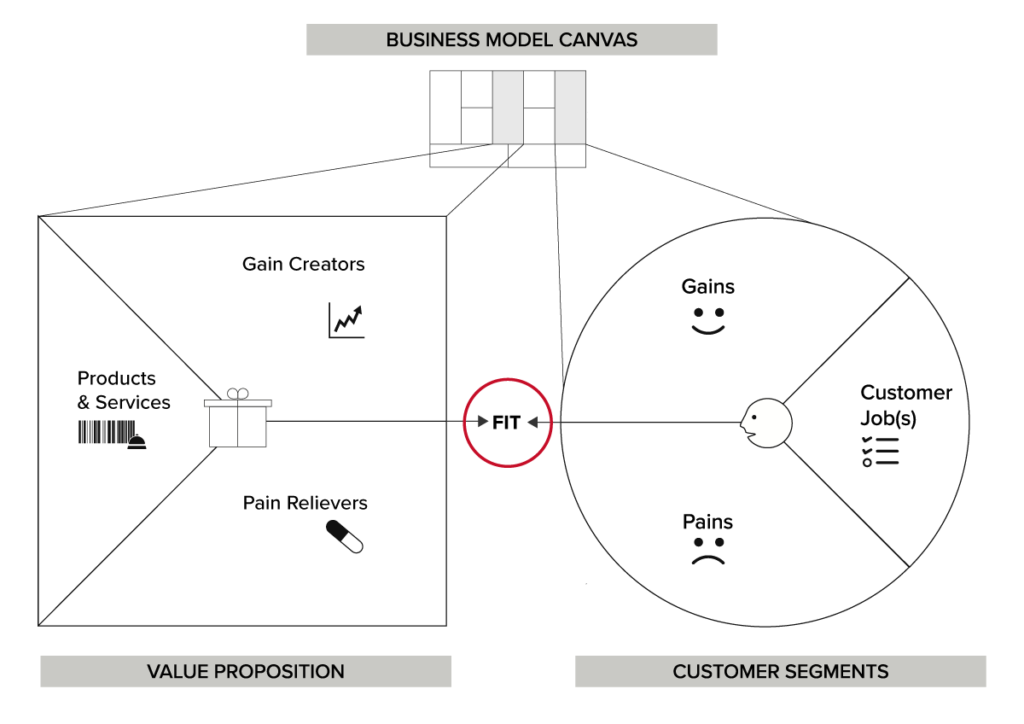
The customer segment block of the business model canvas links tightly with the value proposition block. After writing the Business Model Canvas, Alexander Osterwalder and Yves Pigneur went on to create the Value Proposition Canvas. These two blocks are the most important foundations for any business model.
The essence of the canvas is to understand:
- what customers are trying to achieve – their goal(s) – job(s).
- the problems they have in achieving their goal(s) – pains.
- how and what benefits they want to realise by achieving their goals – gains.
In other words:
- Jobs = What your customers want.
- Pains = frustrations/difficulties associated with the journey.
- Gains = motivations for achieving the job.
What you want to achieve when researching your customer segment is to get a prioritized list of job/pains and gains that you can then go on to create your value proposition.
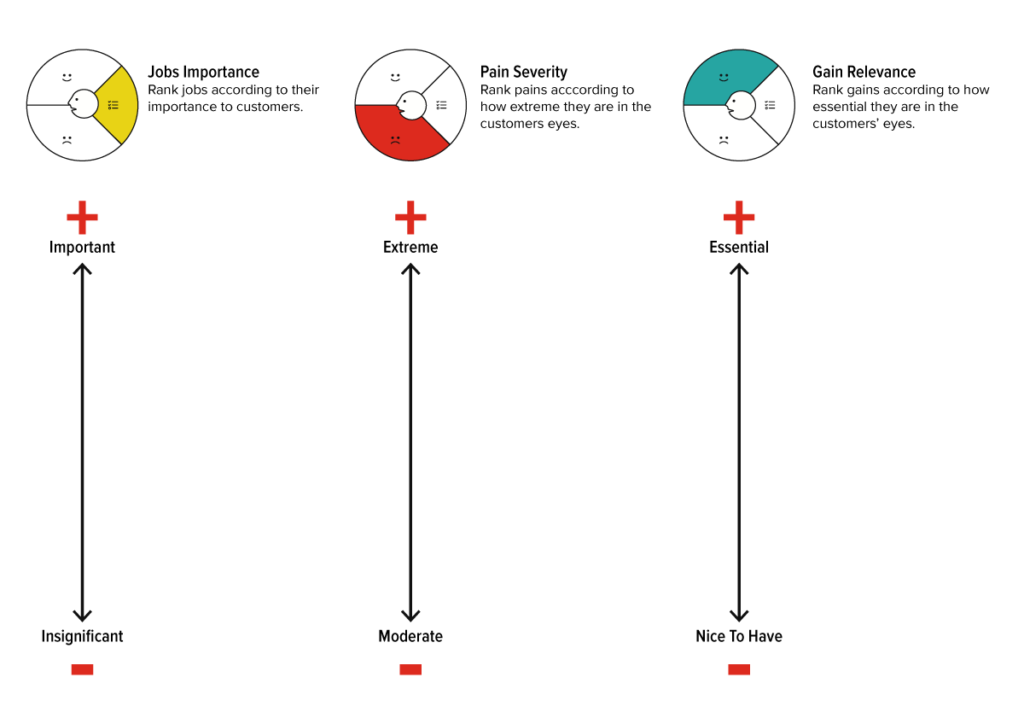
There are lots of different methods for researching jobs, pains and gains. One of the most powerful though is to map a customer journey.
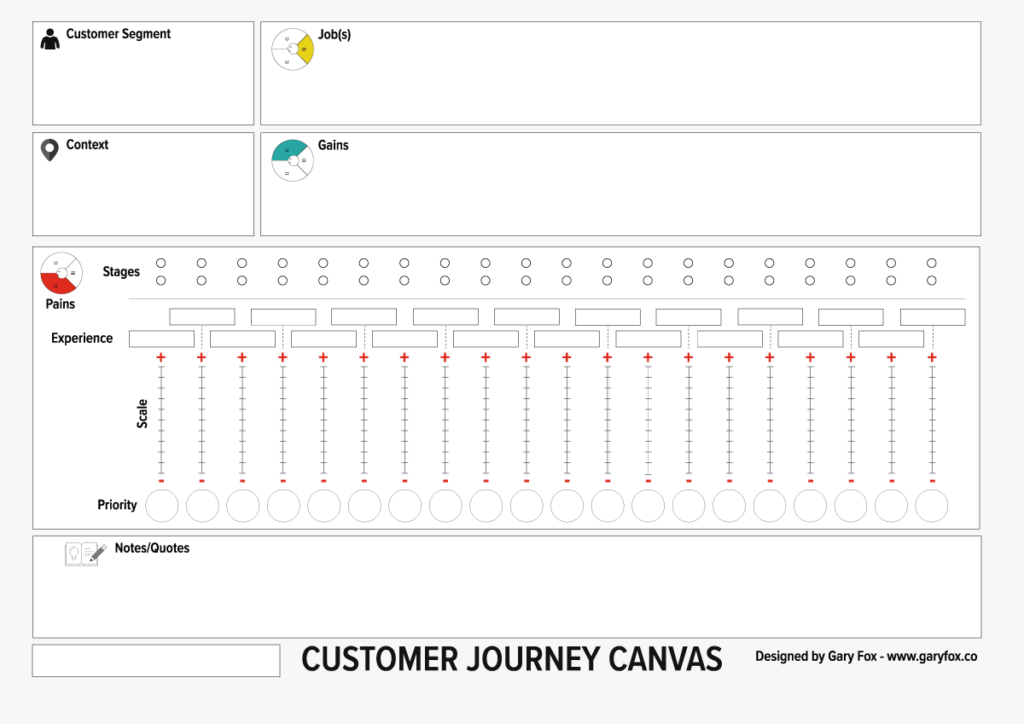
If you want printable pdfs of the customer journey map you can download – click the link.
Outcome
After completing this section of the business model canvas you should have between one to three clearly defined segments (more if you are an established business). For each of these, you will have pulled together existing data you may have and conducted some research.